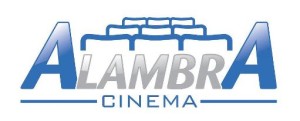The simple denial for the prosecution situation won’t be adequate to trigger this gateway – see R v Fitzgerald 2017 EWCA Crim 556 of where it really is being recommended not only that prosecution witnesses are lying but have actually conspired to pervert this course of justice by placing their minds together to concoct a false allegation – R v Pedley 2014 EWCA Crim 848.
Unlike part 105, area 106 will not contain a provision permitting a defendant to disassociate himself from an imputation. Prosecutors should consequently be mindful whenever trying to count on this gateway based on things raised because of the defendant away from test not relied on in proof. Start to see the responses in R v Nelson 2006 EWCA Crim 3412; “It could have been poor when it comes to prosecution to get to get comments that are such a jury merely to give a foundation for satisfying gateway (g) and having the defendant’s previous convictions invest evidence. Whilst it had been perhaps maybe not recommended that that were the inspiration regarding the prosecution when you look at the case that is present objectively talking, which had to possess been the problem which had arisen. It used that which was not a appropriate foundation for fulfilling certain requirements of gateway (g) on admissibility”
Usage of Bad Character Proof
As soon as admitted, the extra weight become attached with bad character proof is just a matter for the jury, susceptible to the judge’s power to stop an instance in which the evidence is contaminated (see part 107 – below). As soon as proof happens to be admitted through one of several gateways, you can use it for just about any function for which it really is relevant. See R v Highton 2005 1 WLR 3472. What exactly is important but is the fact that court should really be directed demonstrably regarding the basis for the admission associated with proof with a reason of the relevance therefore the used to which such evidence can be placed (see Chapter 12 of this Crown Court Compendium).
Fairness
Proof upon that the prosecution seek to rely through gateways (d) or (g) is at the mercy of section 101(3) which gives
“The court should never acknowledge proof under subsection (1 d that is)( or (g) if, on application by the defendant to exclude it, it seems to your court that the admission for the proof might have such a bad impact on the fairness of this procedures that the court ought to not ever admit it”.
This exclusionary energy comes into play regarding the application associated with defence. The wording in section 101(3) – “must not admit” is stronger than the wording discovered in section 78 authorities and Criminal Evidence Act 1978 (LINK) – “may refuse to allow” –see R v Hanson and R v Weir 2005 EWCA Crim 2866. There isn’t any particular exclusion of part 78 through the conditions of role 11 regarding the 2003 Act however the favored view now’s that when the conditions under area 78 are pleased, the Court does not have any discernment under area 78 – see R v Tirnaveanu. This is really important because section 101(3) will not connect with gateways (c ) and (f) and any application by the defence would need to be produced further to area 78 which is just right that the discernment afforded into the court to exclude proof upon that the prosecution propose to depend ought to be the same whatever route to admissibility.
It ought to be noted that section 78 cannot apply to proof admitted via gateway ( ag e) –evidence adduced on application by the co-defendant.
Area 103(3) for the Act, pertaining to tendency evidence, provides that section 103(2) will likely not use
“in the truth of a certain defendant in the event that court is satisfied, by explanation associated with the amount of time considering that the conviction or even for other explanation, for it to apply in this case” that it would be unreasonable.
?Power of this Court to prevent the truth
Area 107 provides the court the capacity to discharge a  jury or purchase an acquittal where proof happens to be admitted through some of the gateways (c ) to (g) of section 101(1) where it really is apparent that evidence is contaminated and, as a result, any conviction will be unsafe.
jury or purchase an acquittal where proof happens to be admitted through some of the gateways (c ) to (g) of section 101(1) where it really is apparent that evidence is contaminated and, as a result, any conviction will be unsafe.
Proving Convictions and Other Reprehensible Conduct
To allow a court to ascertain whether past beliefs or any other behaviour that is reprehensible admissible through some of the gateways, it is necessary that the court is furnished with the maximum amount of accurate information that you can. The fact of a previous conviction or convictions will be sufficient to determine relevance and previous convictions can be proved by production of a certificate of conviction together with proof that the person named in the certificate is the person whose conviction is to be proved – section 73 Police and Criminal Evidence Act 1984 in some cases. In other instances but, the facts associated with past beliefs ( or other reprehensible conduct) are going to be required to allow a judge to look for the admissibility regarding the character evidence that is bad. See R v M 2012 EWCA Crim 1588 where in fact the Court of Appeal reported it was imperative that the court is provided with step-by-step and information that is accurate the conduct become relied upon.
Prosecutors should consequently look for through the authorities detailed information into the MG3 in regards to the proof believed to total bad character. This will add not just the very fact for the past beliefs but since much detail as feasible. It is practice that is good have the original MG3, appropriate statements and also the accused’s reaction to the allegation within their authorities meeting. If somebody pleaded accountable, it ought to be clarified whether or otherwise not there is a foundation of plea. If there is, the written document should always be obtained. All this product ought to be obtained as soon as possible, ideally prior to cost.
An accused is eligible to dispute the known reality or facts of the conviction. It really is anticipated that the accused should provide notice that is proper of objection prior to the Criminal Procedure Rules in force.
In the event that reality of conviction is disputed, section 74 SPEED 1984 provides that a person’s conviction as shown by a certificate further to section 73 is evidence unless he proves that he did not commit the offence, the burden of proof being upon him that he did commit the offence of which he was convicted. In R v C 2010 EWCA Crim 2971 the Court of Appeal supplied guidance as to exactly how this matter must be handled for the duration of a trial to allow the court to ultimately achieve the objective that is overriding of Criminal Procedure Rules 2015 which can be that criminal situations be managed justly. This might range from the supply of the detailed Defence declaration which will allow the prosecution to take into account calling any evidence to verify the shame associated with earlier in the day convictions. A simple assertion that the simple fact or facts of past beliefs are wrong will perhaps not suffice.
Where in actuality the facts of the conviction that is previous disputed, demonstrably part 74 is of little application. Guidance in these instances ended up being provided in R v Humphris 2005 EWCA Crim 2030 where in fact the Lord Chief Justice said
“This case… emphasises the significance of the Crown determining that if they want a lot more than the data associated with conviction as well as the issues that may be formally founded by depending on SPEED, they must guarantee they have available the mandatory proof to guide whatever they need. Which will usually need the availability of either a statement by the complainant regarding the past beliefs in a intimate instance|a case that is sexual or perhaps the complainant to be accessible to offer first-hand proof of just just just what happened”.

